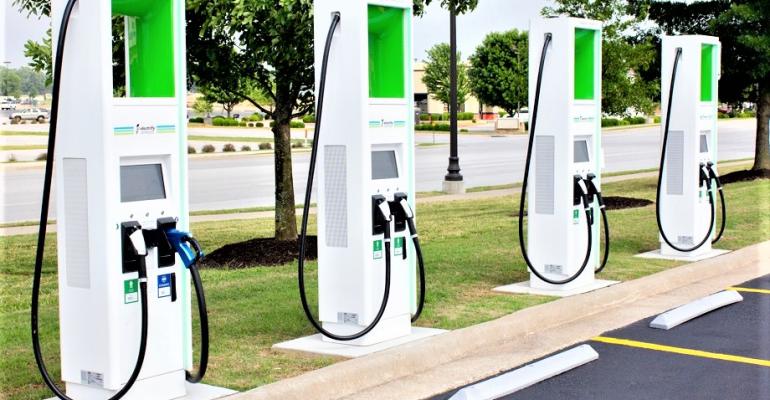To many consumers, the hype surrounding electric vehicles may seem like a new phenomenon. In recent years, global sales of EVs have been surging, with the International Energy Agency reporting that more than 10 million EVs were sold worldwide in 2022. The same study showed that those sales were expected to grow by another 35% this year to reach 14 million.
Despite this striking period of growth, seasoned automotive experts know there has been an interest in EVs even before the first car was developed. In fact, the first EV developed in the U.S. hit the road in the late 1800s.
With that said, the challenges of the early EVs, such as infrastructure and charging, are the same challenges that exist today.
While several states seemingly have solved these infrastructure challenges and built a robust EV ecosystem, it is clear that geographic infrastructure disparities still persist.
Nationwide Disparities
By examining the breakout of EV infrastructure, it is evident there are significant spatial disparities in charging station placements across the nation. For example, California hosts 29% of all charging stations in America, and the top four states (including California) by GDP and population size have the highest number of chargers. What’s further, nearly all of the top 10 leaders are urban, coastal states.
These numbers indicate there is a need to close the gap, specifically in rural America and areas with lower population density. This buildout of infrastructure in coastal regions versus the lack of access in mid-America shows EVs cannot achieve widespread adoption until the scales are balanced.
This issue is also important to look at through two different lenses: consumer and commercial. From a private vehicle perspective, those who purchase an EV may opt for an at-home charger, making this disparity challenge a non-factor. When thinking about the typical vehicle owner, they are not driving extended distances that require significant amounts of battery power.
From a commercial perspective, it is much more challenging to find adequate charging for an 18-wheel freight hauler that is tasked with driving cross country – though new efforts are starting to take shape. Currently, those rural gaps in infrastructure would pose a major challenge to a commercial driver, especially if the goal is to quickly charge the vehicle.
Chicken or Egg?
You may be wondering – are these disparities driven by consumer appetite or by lack of infrastructure? Is the appetite for EVs in urban areas driving faster adoption, or has the investment in charging infrastructure sparked enthusiasm for these populations?
The answer is still uncertain. The green-energy movement in states such as California is vastly different than the push for sustainability in other regions. The “new auto” culture also plays an important role for consumers and EVs.
“New auto” original equipment manufacturers operate differently than traditional automakers. Whereas traditional OEMs know how to build vehicles, these modern enterprises know how to engineer customer-centric vehicles that lead with innovation.
From a customer-experience perspective, “new auto” is designing EVs that consumers view as high tech and aesthetically pleasing. Traditional OEMs are beginning to catch on to these new preferences and branch out into EVs, which may instill an increased appetite for consumers in rural areas – who typically own more traditional internal combustion engine (ICE) vehicles.
Understanding the Long-Term Importance
Solving the geographic disparity issue will not happen overnight, but it is imperative to achieve widespread EV adoption and improve global sustainability. At a high level, EVs result in 54% less lifetime carbon pollution than gas-powered vehicles.
In order to build a more sustainable future, every initiative counts – and EV adoption is high on the priority list. Sustainability is no longer an afterthought for consumers; it drives their decisions and influences the brands that they interact with.
Presently, access to EV infrastructure remains a challenge that needs to be solved. Federal funding already has signaled that the public sector strongly supports the future of this industry, with significant investments made in the buildout of the national network of chargers in the U.S. It is also imperative that local legislatures support the transition to EVs, with California a prime example of the change that can occur when EVs are made a priority.
 Beyond the public sector, industry investments in gigafactories, charging stations and new technologies will continue to propel this industry forward as adequate infrastructure is built out.
Beyond the public sector, industry investments in gigafactories, charging stations and new technologies will continue to propel this industry forward as adequate infrastructure is built out.
The challenges facing electric vehicle adoption have a long history. Solving the nationwide infrastructure disparities will be a collaborative effort between the public and private sector, striving toward the common goal of widespread adoption and increased sustainability.
Scott Farr (pictured, above left) is Segment Lead for Automotive Battery and Electric Vehicles at Capgemini Americas.





